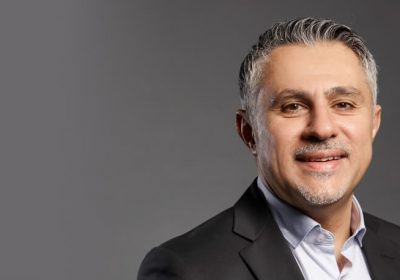
- Author: Johanna Leggatt
- Posted: November 5, 2021
The Art of Delivering Difficult News
Delivering bad news to staff, boards and banks without causing panic or impacting morale is a vital skill set for modern CFOs
There is little doubt that it has been a tumultuous year for CFOs, with the pandemic disrupting the balance sheets, plans and risk assumptions of many finance executives.
Gregory Robinson, managing partner of executive search and board advisory firm Blenheim Partners, notes that investors and other stakeholders rely heavily on guidance from CFOs during uncertain periods. “As the right-hand person to the chief executive and the financial face of organisations, CFOs are responsible for the integrity of the financials, and, as such, must be capable of delivering the reality of the situation,” he says.
So how can CFOs deliver difficult news without damaging morale or causing stakeholders to panic?
PLAY IT STRAIGHT
Craig Watson is the Adelaide-based managing director of investment funds manager Kinsmen Securities Limited and the CFO of Cartridge World in Australia and New Zealand, where he takes a transparent approach to delivering challenging news. “I’ve always had the approach that if you’ve got bad news, then tell it,” he says.
“There’s no point sweeping it under the carpet because if the issue does get out of control, then you’re reporting something that is a lot worse.”
It’s equally important to combine bad news with a range of options to improve the financial outlook. “Usually you’ve got a few levers you can pull,” Watson says. This could include generating revenue through marginal price increases, re-setting loan covenants to reflect current operating conditions or cutting costs.
“Your biggest costs are usually personnel and premises, and obviously making changes to personal is the hardest one to make,” Watson says.
CFO and COO at Holman Webb Lawyers, Magdalena Kosior-Molloy, points out that effective CFOs must deliver challenging news in a sensitive fashion to a range of stakeholders — including staff, financial institutions, the board, or even compliance and regulatory organisations. “You have to firstly get very clear about your message, who the audience is, and be transparent,” she says. “You may get to the point where you think, ‘I don’t want to create panic’, but if you don’t come forward quickly enough then some may ask why you did not tell them earlier.”
The content of the message also matters, she notes, as different audiences will want different information. “When you deliver to the bank, you’re talking with people who understand the numbers, they want to see your forecasts and they want to see your assumptions,” she says.
“When you talk to staff it is a different, more empathetic message, and you have to be able to change your delivery to make sure that everyone understands what you’re trying to say and what it means for them.”
IMPACT OF SOFT SKILLS
Which is where soft skills come into play, with Robinson arguing that the CFO role is also about the need to become a “storyteller” when communicating. “They must be able to pitch at the appropriate level to the particular audience, to read the audience and be able to pivot to connect with that audience,” Robinson notes.
Watson argues that clear written and verbal communication skills are also essential to “give people as much lead time as possible”. But in many ways, he argues, the biggest soft skill of all is how you bring people along with you.
“You may consider what member of the board to go to first, depending on what the matter is, and whether it’s more in their area of governance or expertise, and you may ask whether you should brief management before you go to board to give them an opportunity to come up with some plans of their own,” he notes.
Watson also considers the medium of delivery: deciding on whether the news should come over coffee, phone call or email. “It’s important for me to build those different relationship of trust with the stakeholders,” he says. “That way when I tell them something, they know that they’re hearing the truth whether it’s good, bad or indifferent.”
THE IMPACT OF THE PANDEMIC
Undoubtedly the pandemic has intensified the role of the CFO as strategic leader, and Watson says that variations in geographical lockdowns have added an additional layer of uncertainty.
“During the first lockdown in Australia and New Zealand our sales went up by 30 per cent, but the most recent lockdown in New Zealand, they went down by 23 per cent,” he says.
“So it’s just this uncertainty in our lives and coping what the impact that’s going to have on the business, which is almost impossible to predict.” Robinson says that owing to this level of uncertainty in the market, locally and internationally, investors are “rightly concerned” and rely heavily on the guidance from CFOs.
“With mixed market confidence, unpredictable vaccination rollouts, political unrest and a cacophony of other external forces, investors seek clarity through the truth, and not spin, to make informed decisions,” he says. But, ideally, plotting a path forward is something that CFOs shouldn’t do on their own. “I think this is a team effort in tandem with the CEO and CFO, and if you look at the good CEO and CFO combinations, they do this exceedingly well,” Robinson says.
Kosior-Molloy says delivering bad news is one of the hardest parts of being a CFO, and this only increased when the pandemic arrived in March 2020.
“Everyone will look at the CFO and say ‘tell us what to do’, but for the pandemic we had no trends and no information that could give people certainty,” she says.
Holman Webb Lawyers decided to turn the uncertain times into an opportunity to implement its digital transformation and workplace strategy, with Kosior-Molloy and the executive team meeting twice a week to ensure consistent messaging to stakeholders. “We implemented very agile decision-making of how we were going to communicate and how decisions were going to be made,” she says. “And we made sure we constantly kept in communication with our partners and our staff because it was a very dynamic environment.”
The result is a firm that is “completely different” from two years ago. “It’s more dynamic, more progressive, and we’ve got very high engagement and satisfaction feedback,” she says. “So as much as it is uncomfortable to deliver the difficult messages, if you do it right, then people trust you and they really want to be part of the journey.”








